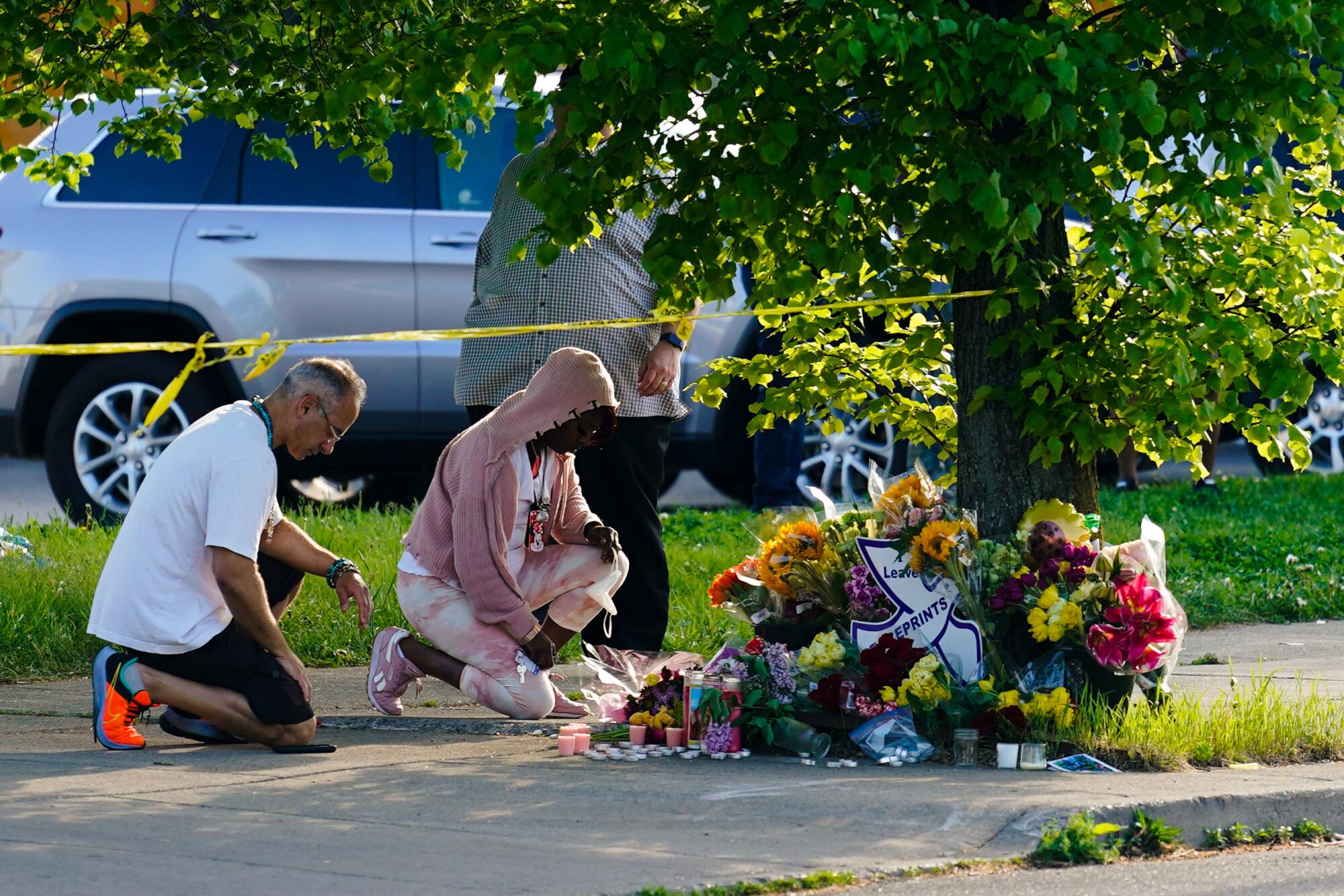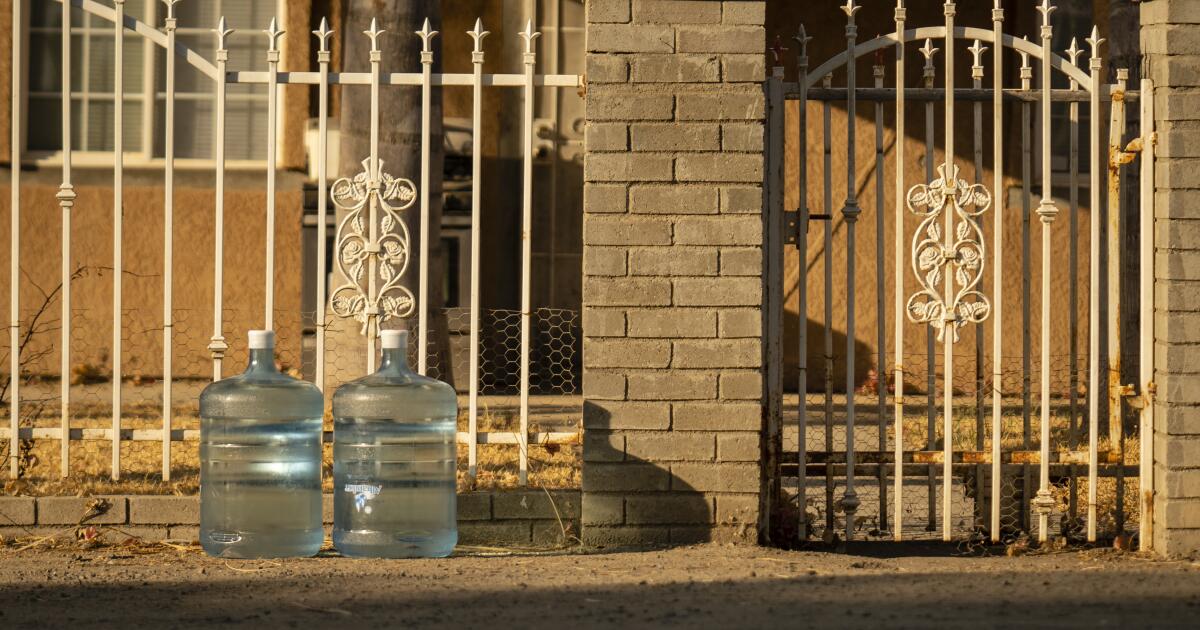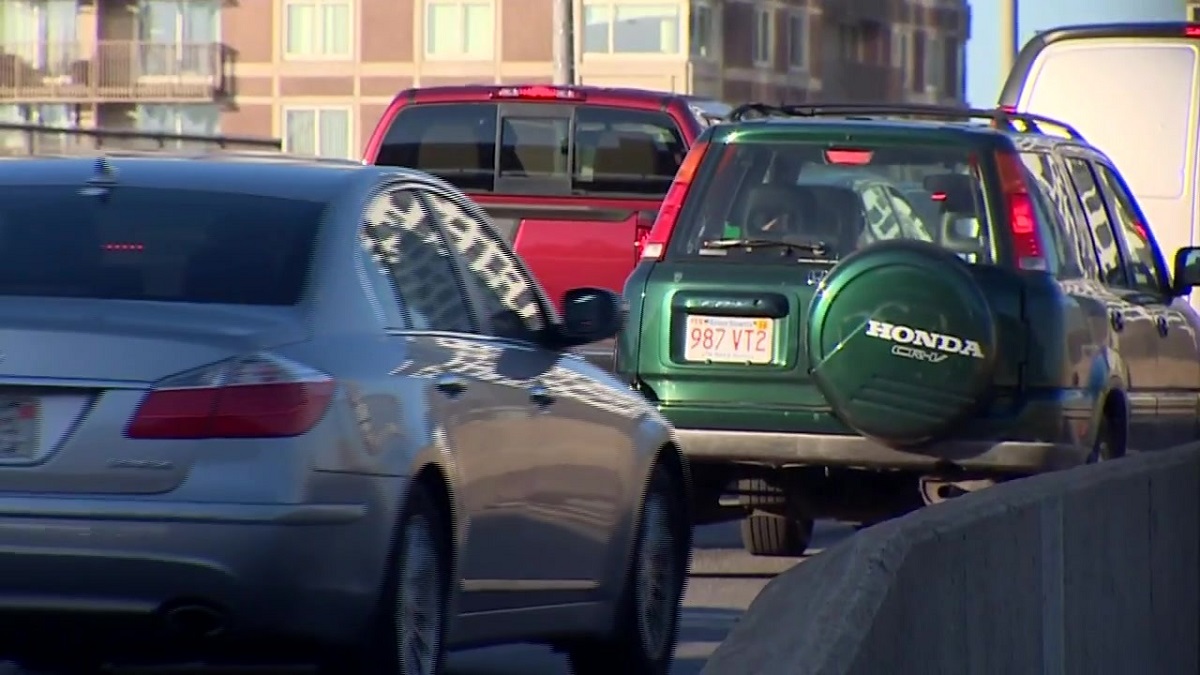Politics
Threats of terrorism in the U.S. are 'more diverse and difficult to counter'

She wanted a rifle. He needed a soldier for his plan to overthrow the government.
Sarah Beth Clendaniel was a radical looking for a target when, authorities say, she plotted with Brandon Russell — a white supremacist who belongs to an organization known as Atomwaffen Division — to destroy the power grid around Baltimore. Clendaniel dressed in camouflage fatigues. Russell went by the alias “Raccoon” and, according to federal agents, kept a framed picture of Oklahoma City bomber Timothy McVeigh on his dresser.
They communicated through encrypted messages, but the mission was foiled by authorities. Clendaniel pleaded guilty in May to conspiring to damage or destroy electrical stations in Maryland. Russell, who was charged earlier with possessing explosives, is awaiting trial. The case did not attract much attention outside Baltimore, but it was another reminder of the danger of terrorism in an unsettled nation.
The U.S. is facing security threats in a presidential election year coming from Islamic militants, far-right extremists, leftist radicals and an array of zealots disgruntled over the nation’s culture wars and our polarized society. Officials are increasingly worried about the deepening strands of left- and right-wing venom rooted in antiestablishment anger and amplified by social media that are testing the government’s ability to track militants like Clendaniel and Russell.
Timothy McVeigh’s hatred of the federal government led him to bomb the Alfred P. Murrah Federal Building in Oklahoma City in April 1995, killing 186 people and injuring hundreds more. According to federal agents, Brandon Russell, who is accused of plotting to blow up the Baltimore power grid, kept a photo of McVeigh on his dresser.
(Associated Press)
“The threat’s not more potent than it was around 9/11, but it’s certainly more diverse and difficult to counter,” said Colin P. Clarke, the director of research at the Soufan Group, an intelligence and security consulting firm in New York City. “We’re dealing with a more aggressive far-right, left-wing and what we call ‘salad bar people,’ who take a little bit of each ideology and thread them together. Incels. Q-Anon. The range of actors at play now is a lot broader than what we’re used to.”
The race between President Biden and Donald Trump underscores the prospects for unrest and violence. GOP senators have asked the Secret Service to keep demonstrators farther from the Republican National Convention at Fiserv Forum in Milwaukee. Protesters are also expected to arrive en masse at the Democratic National Convention in Chicago, where in 1968, during an era of intense upheaval around the Vietnam War that some suggest parallels today’s political tremors, police beat and tear-gassed hundreds of marchers.
On a visit to Chicago this month, Secret Service Director Kimberly Cheatle met with nearly 100 agents who will be protecting both conventions. She told CNN she was concerned about a number of threats, including “the lone gunman.”
“You’ve got folks that are radicalized. You’ve got demonstrations that may pop up. And obviously, we hope they remain peaceful here, but they could turn violent,” she said.
Most of the violence and “other threat indicators [are] from groups that lean more conservative,” said Amy Cooter, a terrorism expert with the Middlebury Institute of International Studies at Monterey. What’s notable, she added, was that the extremist narratives, particularly accelerationist ones — like those espoused by Clendaniel that use violence to speed up social collapse — can appeal to radicals across the political spectrum.
“There’s potential for people who have very different underlying political beliefs,” said Cooter, “to join forces on issues they have common ground on.”
National militant organizations complicit in the Jan 6. riots, including the Proud Boys, remain a danger, Cooter said, despite arrests of its leaders and loss of a centralized online home since Facebook blocked extremist groups. Before the 2020 election, Trump told the Proud Boys to “stand back and stand by.” Reuters reported that after Trump was found guilty in May of falsifying business records, a Proud Boys chapter in Ohio promised “war” in a statement that read: “Fighting solves everything.”
Trump’s increasingly militant campaign speeches against immigrants and conspiracies about the “deep state” also resonate with other groups in the so-called patriot movement. The former president suggested in veiled language that his followers might rise up if he were sent to prison: “I’m not sure the public would stand for it,” he told Fox News. “You know, at a certain point, there’s a breaking point.”

Secret Service Director Kimberly Cheatle told CNN she was concerned about a number of threats to the U.S.
(Julia Nikhinson / Associated Press)
“Not all militia members like Trump. Some think he’s too brash, too old,” said Cooter, who spent years interviewing and investigating militia groups in Michigan. “But they are very responsive to his rhetoric because he appeals to their worries about immigration or about changing culture in other ways. Even if they’re not going to vote for him, their urgency around these issues gets stirred up.”
Today’s turmoil has yet to reach the magnitude of the late 1960s or the 1970s, when far-left domestic terror groups like the Weather Underground and Symbionese Liberation Army orchestrated scores of bombings. Many of the threats these days come from varied agendas, including Payton Gendron, who wrote a 180-page racist screed before killing 10 Black people at a supermarket in Buffalo, N.Y., in 2022, and James Hodgkinson, a left-wing radical who in 2017 shot and wounded at least four people at a softball practice for Republican congressmen in Alexandria, Va.
In April, Kyran Caples, who police say was radicalized while at Fresno State and joined an obscure antigovernment group known as the Moorish sovereign citizens, shot and critically wounded two police officers in Florida. Caples was killed by police. In the plot to destroy the Baltimore power grid, the Justice Department quoted Clendaniel, once photographed heavily armed and wearing camouflage fatigues, a headscarf and a skull mask, as saying an attack “would probably permanently completely lay this city to waste.”
The country has been shaken by anger and unrest in recent years around the COVID-19 pandemic, mass shootings, George Floyd protests, an insurrection at the Capitol and pro-Palestinian rallies on college campuses. Those domestic ruptures have coincided with a rejuvenated branch of ISIS that is recruiting militants beyond its base in Afghanistan and this year carried out attacks in Russia and Iran that killed at least 220 people.
FBI Director Christopher A. Wray recently told cadets at the U.S. Military Academy at West Point that his agency was concerned about “a rogues’ gallery” of foreign organizations calling for violence against Americans. But he suggested that the more pressing danger comes from individuals and small groups in the U.S. who “draw twisted inspiration from the events in the Middle East to carry out attacks here at home.” The agency, he said, has been “running down thousands of reported threats.”

(Allison Dinner / Associated Press)
He added that tensions around the Israel-Hamas war “will feed a pipeline of radicalization and mobilization for years to come.” In April, Wray, describing what he called a heightened threat environment, told the House Appropriations Committee that the agency’s 2024 fiscal year budget was nearly $500 million below what it needed. “This could not come at a worse time,” he said. “We need people…. Now is not the time to cut back.”
That threat landscape — radiating through a wide prism of anger and ideologies — has shaped America’s discourse and sharpened its divisions. The battles playing out in Congress have run parallel to social and political fervor around antisemitism, Gaza, abortion, immigration and gun rights unfolding on college campuses, state houses, podcasts, rallies and talk shows.
“The powerful emotions that have been unleashed aren’t fading,” said Bruce Hoffman, a terrorism expert and professor at Georgetown University. “Terrorism never occurs in a vacuum. It always leverages off of the divisions, contentiousness and controversies that are in the political arena and that will lead to a very small fringe to conclude that violence is the only way” to overthrow a corrupt system.
The radicalization of the young is rooted in the generation that came of age during the isolation of the pandemic and has since seen governments as either powerless or indifferent to climate change, wealth gaps and stopping wars in Ukraine and Gaza. “This seeds a bed of frustration and mistrust,” said Hoffman, co-author of “God, Guns, and Sedition: Far-Right Terrorism in America.” “They’re looking to be entertained and stimulated rather than informed and confident that they’re getting accurate information. TikTok is feeding them what they want.”

People pay their respects outside the scene of a shooting at a supermarket in Buffalo, N.Y., on May 15, 2022. Payton Gendron wrote a 180-page racist screed before killing 10 Black people at the market.
(Matt Rourke / Associated Press)
When he was testifying testified before the House Appropriations Committee, Wray outlined the threats the U.S. faces from terrorism, cartels trafficking fentanyl, and cyberattacks on business and infrastructure.
“As I look back over my career in law enforcement,” he said, “I would be hard-pressed to think of a time where so many threats to our public safety and national security were so elevated all at once.”

Politics
Video: Julian Assange Walks Free After Guilty Plea

new video loaded: Julian Assange Walks Free After Guilty Plea
transcript
transcript
Julian Assange Walks Free After Guilty Plea
After more than a decade of legal battles, the founder of Wikileaks left a courthouse in Saipan and boarded a plane home for Australia.
-
How does it feel to be a free man, Mr. Assange? Finally, after 14 years of legal battles, Julian Assange can go home a free man. This also brings to an end a case which has been recognized as the greatest threat to the First Amendment in the 21st century.
Recent episodes in U.S.
Politics
Popular Republican and Trump running mate contender makes first Senate endorsement in 2024 races

EXCLUSIVE – Republican Sen. Tim Scott of South Carolina, who’s under consideration as former President Donald Trump’s running mate, is weighing in on the GOP Senate primary in a key battleground state.
Scott on Wednesday endorsed former Rep. Mike Rogers of Michigan, a former House Intelligence Committee chair who is the front-runner in the August Republican primary in the fight to succeed longtime Sen. Debbie Stabenow, a Democrat who is not seeking re-election this year.
The seat is one of a handful that Republicans are aiming to flip from blue to red in the autumn elections as they push to regain the Senate majority they lost in the 2020 cycle.
“Mike Rogers’ commitment to service has always been about putting the American people first. When Mike and I served together, he was a leader who delivered results and fought to expand opportunities for working families and those pursuing their American Dream,” Scott said in a statement. “I’m proud to endorse him to be Michigan’s next U.S. Senator because I know Mike will bring his servant leadership to the U.S. Senate.”
WHAT THE REPUBLICAN SENATE CAMPAIGN CHAIR TOLD FOX NEWS ABOUT WINNING BACK THE MAJORITY
Republican presidential candidate former President Donald Trump looks to Sen. Tim Scott, R-S.C., during a Fox News Channel town hall Tuesday, Feb. 20, 2024, in Greenville, S.C. (AP Photo/Chris Carlson) (AP Photo/Chris Carlson)
Scott’s backing of Rogers, which was shared first with Fox News, is his first formal endorsement in a Senate race this election cycle, although he’s helped other Republican candidates raise money.
Rogers, an Army veteran and a former FBI special agent before serving in Congress, enjoys the backing of the National Republican Senatorial Committee (NRSC), which is the campaign arm of the Senate GOP. And in March, Rogers landed the endorsement of Trump, the party’s presumptive presidential nominee.
6 KEY SENATE SEATS REPUBLICANS AIM TO FLIP IN NOVEMBER
“Senator Scott has been a tremendous champion for conservative values in the U.S. Senate and I’m honored to receive his endorsement,” Rogers said in a statement. “Together in the Senate we will work with President Trump to help Michigan families, lower the cost of gas and groceries, and secure the southern border.”
Rogers has also been endorsed in recent months by seven other Republican senators, as well as Mike Pompeo, who served as Secretary of State and CIA director in the Trump administration. He’s also been endorsed by former Detroit police chief James Craig, who backed Rogers after ending his own Republican Senate nomination bid earlier this year.

Republican presidential candidate former President Donald Trump listens as Michigan Senate candidate former Rep. Mike Rogers speaks at a campaign rally in Freeland, Mich., Wednesday, May 1, 2024. (AP Photo/Paul Sancya) (AP Photo/Paul Sancya)
As they work to win a Senate election in Michigan for the first time in three decades, Republicans were hoping to avoid a potentially costly and combustible primary.
But Rogers doesn’t have the field to himself.
The primary race also includes wealthy businessman and investor Sandy Pensler, who’s making his second run for office and has been spending big bucks to run ads targeting Rogers. Former Republican presidential candidate Vivek Ramaswamy endorsed Pensler.
Among the others running for the GOP nomination are former Rep. Justin Amash, who as an independent House member joined Democrats in voting to impeach then-President Trump in his first impeachment trial in 2019.
The state primary in Michigan will be held on August 6.
Scott, the only Black Republican in the Senate, ran unsuccessfully for the 2024 GOP presidential nomination but remains a very popular and influential figure in the party.
The senator, who was known for his ferocious fundraising as he cruised to a Senate re-election in 2022, has strong ties with many leading figures in the GOP donor class. The money raised two years ago served as a down payment for his 2024 national run.
Besides raising money for himself, Scott has also been very active in helping fellow Republicans running for office.
In the 2022 cycle, the senator raised nearly $1 million for other candidates and donated more than $1 million to down ballot races. And two outside groups aligned with Scott spent $13 million on top Senate and House races, while also transferring $5 million to the top super PAC supporting Senate Republicans.
A super PAC allied with Scott announced earlier this month it would spend $14 million to help Republicans grow support among Black voters.
Get the latest updates from the 2024 campaign trail, exclusive interviews and more at our Fox News Digital election hub.
Politics
Cost of bringing clean drinking water to California communities estimated at $11.5 billion

California has made significant progress helping small communities address problems of contaminated drinking water, but the costs of bringing safe tap water to hundreds of communities over the next five years will run more than $11.5 billion, according to a new state estimate.
In a newly released report, the staff of the State Water Resources Control Board estimated that at the start of this year approximately 913,000 Californians depended on public water systems that are failing to comply with drinking water regulations, while an additional 1.5 million people depended on water systems that are determined to be “at-risk.”
Officials carried out the assessment nearly five years after the state established the Safe and Affordable Funding for Equity and Resilience, or SAFER, drinking water program. They said in the report that under the program, the state water board has since 2019 given more than $831 million in grants for drinking water projects in disadvantaged communities, and that about 250 failing water systems serving more than 2 million people have come into compliance with drinking water standards.
“What our analysis has shown time and again is that the common denominator is size,” said Joaquin Esquivel, chair of the state water board. “Small systems struggle, especially in communities that have experienced discrimination and disinvestment, and their challenges will be amplified as weather grows more extreme, new contaminants emerge and costs increase.”
Aggressive and impactful reporting on climate change, the environment, health and science.
California declared access to clean, safe and affordable water a human right in 2012, but the state has faced significant challenges in developing policies and securing adequate funding to bring solutions for communities where people live with contaminated tap water.
In small rural communities across the state, the water pumped from wells contains harmful levels of contaminants including naturally occurring arsenic, bacteria from sewage leaks, nitrate from animal manure, fertilizers or other sources, and carcinogenic chemicals.
Not all systems that are deemed to be failing deliver water that is contaminated, but many of them have at least one contaminant at levels that violate safe drinking water standards.
According to state data, about 56% of the 385 failing water systems supply disadvantaged communities, and 67% of them supply majority communities of color.
“All of our current failing water systems are on track to come off the failing list,” said Kristyn Abhold, senior environmental scientist for the state water board. “They are working on long-term solutions, and our staff and funding resources are being targeted to the ones that are in most need.”
State water regulators have found that the vast majority of the failing water systems serve a small number of residents, while 98% of the state’s population receives water from sources and suppliers that meet drinking water standards.
For a water system to come into compliance with regulations, it takes not only funding but also planning, engineering work and permits, Abhold said.
State officials have assessed other communities that are at risk by analyzing the potential for water quality violations or water shortages, among other factors.
The number of people affected has fluctuated in recent months as some water systems have come off the list and others have been added. The state’s latest estimates show that 738,000 people currently receive water from failing systems, while more than 1.8 million people depend on 548 systems with drinking water supplies determined to be at risk.
The state’s report includes estimated costs for infrastructure solutions such as installing treatment systems, drilling a new well, or consolidating by connecting one water system to another.
The estimated costs of solutions in the latest report were substantially higher than previous state estimates. In a 2021 report, the state water board included a range of estimated costs up to $9.1 billion. Officials said they used new methods and improved data this time, including more water systems and risks in their analysis.
According to the report, the estimated costs of long-term solutions for failing and at-risk public water systems total $6.6 billion over five years, while the costs of solutions for “high-risk” small water systems and domestic wells total $4.9 billion.
Those combined costs, totaling more than $11.5 billion, would be significantly higher if loan repayment costs and operations and maintenance costs are included, the report said, pushing the total estimated cost of “achieving the human right to water” to $15.9 billion.
Officials projected that $2 billion in state grant funds will be available over five years, as well as $1.5 billion in state loans, leaving a substantial gap in available funding. Officials said a large portion of the money to address the problems may need to come from “local cost share” funds collected through rates, fees and taxes.
The report’s higher cost estimates were released amid discussions about budget cuts in Sacramento.
Citing recent cuts, more than 180 organizations, including environmental groups and other organizations, wrote to state leaders urging them to approve placing a $10 billion bond on the November ballot to provide “direct and meaningful investments in the California communities and natural resources most impacted by climate change.”
As part of that ballot measure, they called for including $1 billion for drinking water and wastewater infrastructure for communities and tribes.
Leaders of the groups wrote that “recent and proposed cuts to funding for such programs have prompted consensus that additional bond funding is necessary to ensure priority programs continue beyond this year.”
Jennifer Clary, California director for the group Clean Water Action, said: ”drinking water infrastructure isn’t a luxury item. Without these projects, thousands of Californians will continue to lack access to safe and clean drinking water.”
Clean water advocates have also voiced concerns as state officials have reviewed the costs of a program that provides household tanks and hauls water by truck to thousands of low-income families whose wells have gone dry.
More than 3,000 domestic wells have run dry throughout California since 2020, according to reports submitted to the state. Those with dry wells have started relying on water delivered by tanker trucks to fill their tanks, while also receiving bottled water.
Leaders of the nonprofit group Self-Help Enterprises, which manages the water-hauling effort, recently urged Gov. Gavin Newsom and other state leaders to reject proposals that would take away critical funding for the program. They wrote in a June 11 letter that taking away $17.5 million would “cut off access to water for more than 20,000 people who are still awaiting a permanent solution.”
The letter, which was first reported by the news site SJV Water, was also signed by leaders of other organizations, including the Community Water Center and Union of Concerned Scientists.
“The reversions of these funds will cut off access to water for more than 20,000 people who are still awaiting a permanent solution,” the groups said. “Cutting funding for such a crucial program would have devastating effects on rural and disadvantaged communities by immediately cutting them off from their sole source of water supply, and doing so with no warning.”
Leaders of some groups said later that the funding for the program has been restored.
-

 World1 week ago
World1 week agoProtesters in Brussels march against right-wing ideology
-

 News1 week ago
News1 week agoA fast-moving wildfire spreads north of Los Angeles, forcing evacuations
-

 Movie Reviews1 week ago
Movie Reviews1 week agoShort Film Review: Willow and Wu (2024) by Kathy Meng
-

 World1 week ago
World1 week agoAl-Qaeda affiliate claims responsibility for June attack in Burkina Faso
-

 News1 week ago
News1 week agoMass shooting at Rochester Hills splash pad: Everything we know
-

 Movie Reviews1 week ago
Movie Reviews1 week agoFancy Dance (2024) – Movie Review
-

 World1 week ago
World1 week agoRussia sets date for closed-door trial of US journalist
-

 Politics1 week ago
Politics1 week agoTrump resurrects Biden's 'devastating' 1994 crime bill as he courts Black Detroit voters: ‘Super predators'















